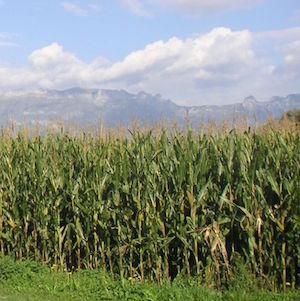I have been a long-time reader of Pacific Standard (once called Miller-McCune), a publication that tries to be the West Coast equivalent of The Atlantic. That is a fine mission because, as a Seattleite, I am keenly aware that there aren't many West Coast media outlets that capture the attention of the rest of the nation.
When I was still editor of RealClearScience (RCS), I frequently linked to Pacific Standard's content, particularly articles produced by Tom Jacobs, who was and continues to be a fine social science writer. However, in recent months, the magazine as a whole has become nearly unreadable. As its political cheerleading becomes more and more blatant, its standards for science journalism have fallen. I don't think that is a coincidence.
A few years ago, something similar happened at Slate. At one time, Slate was producing so much good science content that RCS would link to them several times per week. But when its science page became an extension of its political coverage (thanks largely to Phil Plait), RCS took them far less seriously. Despite the fact that we had a politically diverse editorial team, RCS was turned off by the one-sided politicization of science.
The latest exhibit on "how not to do science writing" comes once again from Pacific Standard, which covered a new paper from Science Advances on pesticide use among farmers who adopted GMOs. The article begins, "There is at least one potentially good thing about genetically modified crops."
Right off the bat, the author, Nathan Collins, is admitting his anti-GMO bias. If he believes that there is merely "one potentially good thing" about GMOs, then he has chosen to ignore the scientific consensus on GMOs, as well as the entire field of biotechnology -- which has done everything from creating specialized animal models for researchers and insulin for diabetics. But that journalistic tip-of-the-hand is forgivable; what he does next is not.
The gist of Mr. Collins' article is that pesticide use has increased and herbicide (glyphosate) resistance is spreading. The article's summary states, "In theory, Roundup Ready soybeans and the like should have reduced pesticide use. They haven't." But, that's highly misleading. Mr. Collins largely ignores other conclusions made by the researchers and uses the vague word pesticide when he should be making a crucial distinction between herbicides and insecticides.
As a general rule, herbicides and insecticides are much safer than they were in the past. Decreasing their application just for the sake of using fewer pesticides isn't necessarily a worthwhile goal. Still, it is worth differentiating between herbicides and insecticides, as each plays different roles in the ecosystem.
The authors of the paper indeed concluded that farmers who use glyphosate-resistant crops "used increasingly more herbicides relative to nonadopters" and that the spread of glyphosate-resistant weeds appears to be to blame. The upward trend in both glyphosate use and resistance is concerning and must be addressed. But they also clearly wrote in their abstract:
When pesticides are weighted by the environmental impact quotient, however, we find that (relative to nonadopters) GE [genetically engineered] adopters used about the same amount of soybean herbicides, 9.8% less of maize herbicides, and 10.4% less of maize insecticides.
In other words, when one factors in how damaging a particular pesticide is to the environment, GMOs have a pretty good record over the study period (1998-2011). That is because glyphosate is less toxic than many other herbicides and is even less toxic than caffeine. (To his credit, Mr. Collins acknowledges this.) Crucially, GMOs have caused a 10% drop in insecticide use.
However, Mr. Collins' article entirely ignores that. Instead, he focuses almost exclusively on the increasing trend of glyphosate use and resistance. Mr. Collins quotes the authors: "[T]he most striking trend has been an increase in the use of glyphosate." This is certainly true, especially for farmers who use genetically modified soybeans. These farmers have applied more herbicide than those who do not use genetically modified soybeans since 2003. But he left out the very previous sentence: "The rate of use of insecticides applied to maize fell from 0.2 kg/ha in 1998 to about 0.05 kg/ha in 2011, a 75% decrease."
That is a telling omission. It is difficult to come to any other conclusion than that it was purposeful.
In the Discussion, the authors once again clearly state:
Over the period 1998–2011, our results show that GE [genetically engineered] variety adoption reduced both herbicide and insecticide use in maize, while increasing herbicide use in soybeans. However, weighting pesticides by the EIQ lowers the difference in herbicide use by GT soybean adopters (such that the estimated average impact over the study period is statistically indistinguishable from zero). Adoption of Bt maize, on the other hand, is associated with a clearer decline in insecticide use.
And:
We find clear evidence of increasing herbicide use by GT [glyphosate-tolerant] variety adopters over time for both soybeans and maize, a finding that we attribute in part to the emergence of glyphosate weed resistance.
These conclusions add nothing substantive to the literature. While the authors' methods are new (and perhaps more accurate), there are no new takeaways. Both the overuse of glyphosate (and the subsequent resistance in weeds) and the drop in insecticide use have been documented before. Honestly, this isn't an article worthy of press attention... unless a writer is trying to politicize it.
There seems to be a greater lesson here for media outlets: Partisanship and science quality are inversely related.




